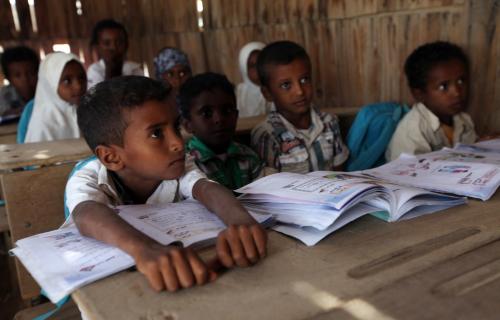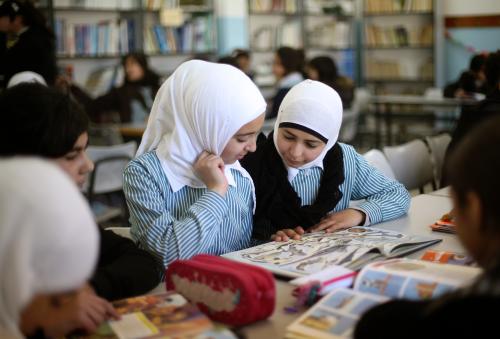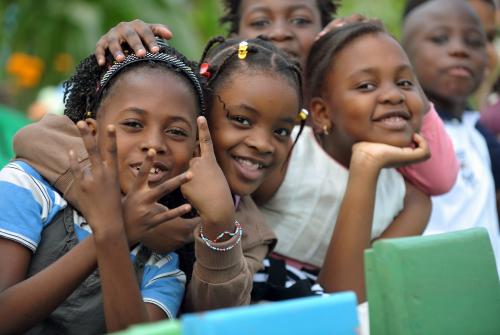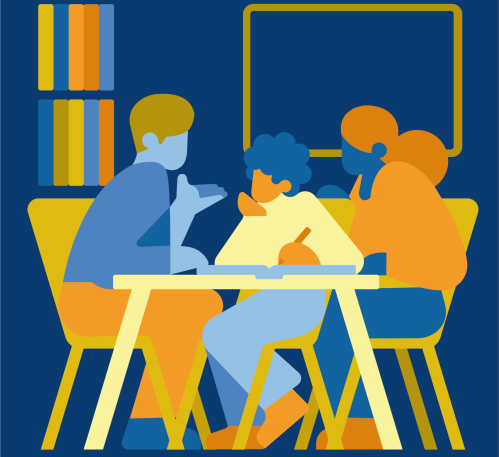This is the third piece in a blog series on NISSEM’s global briefs, a collection of peer-reviewed essays within the field of education.
At first glance, the NISSEM global briefs may seem impossibly broad: They range from global analyses to village-level interventions. Written from the perspectives of more than 60 contributors, each piece describes a somewhat different approach to fulfilling the promise of Sustainable Development Goal (SDG) 4, the education goal, in countries with scant resources upended by conflict. True to NISSEM’s fundamental principles, the unifying theme is the common focus on integrating SDG Target 4.7 and Social and Emotional Learning (SEL) into educational materials in low- and middle-income countries (LMICs). Yet, the briefs do more than report, inspire, and analyze—collectively, they propose a relatively narrow, selective strategy focused on educational materials, including school textbooks. This raises two questions. First, in the face of the extremely broad scope of the SDGs, why such a narrow approach? Second, why textbooks?
In response to the first question, I draw on long-term research on innovation in the health and education sectors. I argue in Brief 39 (Institutionalizing children’s right to education: Getting organized) that since the international community began formulating broad, comprehensive global goals over 70 years ago, the main way of moving them forward has been through ‘divide and conquer.’ The non-binding Universal Declaration of Human Rights (1945) was divided into two covenants (1966), which were subsequently divided and reformulated into sector-specific global declarations. In health, the comprehensive Declaration of Primary Health Care for All (1978) was overtaken by a selective initiative (1980-1995) focused on a much narrower, photogenic target group—under-five-year-olds; with a handful of low-cost interventions, the initiative promised the dramatic results of halving the under-five mortality rate in less than a decade. While the so-called “child survival” selective approach scandalized much of the international health community, its highly visible (and highly publicized) results have inspired a steady stream of new selective health initiatives in the last 25 years.
In response to the second question, I draw a parallel to selective health initiatives when considering ways of promoting SEL and Target 4.7 themes in LMICs and countries affected by conflict. Reworking textbooks and other learning materials may have some key characteristics that various scholars have identified with successful selective global initiatives from the last 50 years. These include a clear price tag, being relatively low cost, ability to piggy-back on a pre-existing delivery mechanism, resonance with various stakeholders, and being “do-able” within a project or political cycle. Scientific backing helps, and for SEL, neuroscience is adding to the findings of traditional forms of education research.
Admittedly, the focus on educational materials is not intuitive, particularly for those unfamiliar with conditions in LMICs. Most educators, for example, are likely to argue that teachers are a much more important determinant of educational quality than textbooks. Nonetheless, as explained in the first two blogs in this series, textbooks play an outsized role in determining what gets taught as well as how it gets taught, particularly in parts of the world where teachers have minimal professional development and few resources in the classroom. I suggest that moving selective initiatives ahead does not demand a comprehensive strategy. As shown in Figure 1, several types of activities, some relatively independent of each other, can get and keep the ball rolling at the international, national, or local level. And champions—prominent, well-known public figures with an outspoken role promoting education initiatives—may be able to move this process faster than professionals trying to push it along from the outside. Many of the contributions in the NISSEM global briefs focus on one or more of these activities.
Figure 1: Using champions to move selective education initiatives forward

As an example, in Brief 40 (Narrating our violent pasts in curricula and textbooks), Atif Rizvi and Ayla Bonfiglio describe the work of the Conflict and Education Learning Laboratory (CELL) aimed at reducing divisive stereotypes in primary and secondary textbooks. This is an issue that resonates with UNESCO, as well as with humanitarian donors interested in reducing and preventing school-level bullying and ethnic conflict, along with many others. CELL strives to champion and publish scholarly analysis to raise awareness of the widespread presence of divisive stereotypes in educational materials (evidence), form alliances among key stakeholders who can develop minimum standards for educational content (standards), and work toward international agreements to discourage inclusion of divisive stereotypes in educational materials (policies).
In Brief 41, “The global to local impact of networks for social and emotional learning, peace, and conflict resolution,” Jennifer Batton showcases the efforts of two networks—one international and one domestic—to promote coordinated action around SEL, and education for peace, conflict resolution, and related topics such as bullying prevention. Again, these networks see textbooks and curriculum as especially strategic areas to move their agenda forward, though in countries with better developed teacher education systems, options for working with teachers are broader. Alternatively, various groups with very limited resources can use studies like the one summarized by Tina Robiolle in Brief 42 (Promotion and implementation of Global Citizenship Education in crisis situations) to keep one or more global education commitments alive.
So, what does NISSEM suggest for a materials-focused, selective strategy in support of SEL and SDG 4.7 themes in LMICs and post-conflict areas? Collectively, NISSEM global brief authors describe dozens of innovations, pilot programs, research, standards, and policy already underway in many such contexts, including in some of the world’s poorest countries and those ravaged by ongoing conflict. As readers will notice, many of these grassroots innovations are locally managed and implemented in a sustainable way at relatively low cost. In addition, many of the authors themselves are champions for these activities at the international or national level. At the national level, the process to influence SEL and SDG 4.7 themes is illustrated in Figure 2 below.
Figure 2: A materials-focused, selective strategy to support SEL at the national level

International commitments are already strong, whether through the holistic Convention on the Rights of the Child, the narrower SDG Target 4.7 themes, or the even narrower UN Girls’ Education Initiative. At the national level, most countries have laws and policies that essentially require education to contribute to the well-being of society by developing responsible citizens. Moreover, SEL and themes relating to SDG 4.7 goals are typically included in broad terms in curricula and syllabi. However, to what extent have both youth and teachers been engaged in developing those broad themes into engaging, culturally relevant, age-appropriate examples and exercises? To what extent have writers of educational materials and textbooks been trained in the new themes and examples and learned techniques for embedding pedagogy? Finally, to what extent has the effectiveness of the new textbooks and materials been tested in terms of improvements in student cognitive, behavioral, and social outcomes?
The final chapter of the NISSEM global briefs incorporates nine recommendations from the 2018 NISSEM position paper, as well as considerations for ministries of education, examination boards, donors, NGOs, and academics and graduate students, for collaborative activities to advance SEL and SDG Target 4.7 themes in educational materials in the next five years. These recommendations highlight the importance of engaging the imagination, energy, and idealism of youth—those who struggle to enter the 21st century workforce in the face of globalization, automation, and nationalism—in this selective but powerful strategy.






Commentary
A selective strategy to advance social and emotional skills through textbooks
November 8, 2019